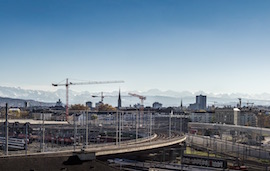Spatial Energy Analysis Toolbox (SEAT)
The Spatial Energy Analysis Toolbox (SEAT) answers spatial-topological questions. The aim of the REAT is to support municipalities, cities and regions in preparing for the challenges of a climate-friendly heat supply and to develop spatial energy planning with corresponding measures. REAT-based planning of the energy supply in the area under consideration creates planning security for investors and at the same time increases autonomy in the region. REATs are thus a central component of spatial energy planning and have been used by municipalities, cantons such as the Canton of Basel-Landschaft and comprehensive studies such as the WIS study.
The REAT is used to identify spatial-topological and local potentials of various energy sources (local and pipeline-bound as well as transportable and storable). The results of the analyses are processed according to the situation, namely in the form of area distinctions, geo-referenced and building-specific potentials or aggregated characteristic values. Different framework conditions and restrictions are integral components (such as different heat distribution costs, network paths, noise laws, water protection maps and specifications for the regeneration of borehole heat exchangers).
Projects

Municipal heat planning in Volketswil
With reference to its climate policy objectives and as a result of its energy city process, the municipality of Volketswil is having its municipal energy planning revised.

Municipal energy planning in Glarus
Based on the cantonal energy law revision of 2021, the municipality of Glarus is revising its municipal energy planning with the aim of achieving a fossil-free heat supply. TEP Energy is supporting the municipality with its solutions, such as the Spatial Energy Analysis Toolbox (SEAT) and the building stock model, in order to achieve the energy and climate targets in a sustainable and economically efficient manner.

Solar energy strategy and potential study in Wädenswil | TEP Energy
TEP Energy is conducting a solar strategy and potential study to accelerate the expansion of solar energy in the city of Wädenswil.

Energy Law Report for the Canton of Basel-Landschaft
Development of a methodology for the periodic evaluation of the measures and goals of the canton's energy law.

Heating Initiative Switzerland
On behalf of the Swiss Heating Initiative (WIS), the decarbonization of the heating sector will be examined by 2050. Spatial potential analyzes and the Swiss building stock model (GPM) are used.

Energy Supply Concept 2050 for the City of Zurich
The Energy Supply Concept 2050 used a scenario approach to show that the heat supply of the city of Zurich could meet the goals of the 2000-watt society.
